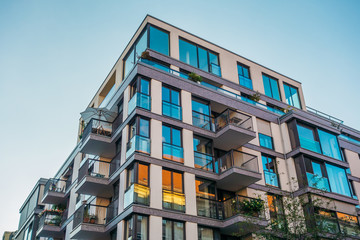Commercial Real Estate Las Vegas encompasses a variety of buildings and land used for income-generating purposes, such as malls, offices, warehouses, and multifamily apartment complexes. Unlike residential properties, most commercial buildings are leased to businesses that pay rent reliably over longer lease terms.
Direct CRE investment is typically reserved for deep-pocketed individuals or firms specializing in the sector. But even those with only a cursory interest in the industry can gain exposure to the market through indirect investments like REITs, crowdfunding, and ETFs.

Office space is one of the most well-known types of commercial real estate. From the glamorous downtown towers with imported marble and concierge services to the smaller offices that accommodate professional organizations like law firms and accounting companies, a range of different sizes and styles is available.
Unlike residential properties, which are owner-occupied, commercial buildings typically rent out their spaces for business use. These businesses can be retailers, manufacturing, or even professional organizations. This structure allows for multiple income streams and helps minimize vacancies and risks when investing in this property type. Generally, office spaces offer longer lease terms than other commercial property types.
Investors usually classify office space by its age and location. This translates into class A (newer, best quality), Class B (mid-range), and class C (older, lower quality). In general, office space is more in demand when the economy is strong, and it tends to be less affected by economic cycles than other commercial property types.
Aside from the classification system, investors also look at the building’s amenities and features when evaluating its value. This includes everything from the parking lot layout to the amount of sunlight a space gets. These factors influence the type of tenants the space attracts and its resale value.
Traditional office space often consists of a reception area, conference rooms, private offices, break rooms, and a mail room. These spaces are used by many different kinds of professionals, from architects and engineers to insurance agents and financial institutions.
Class A office spaces are built with high-end finishes and state-of-the-art technology. They are often located in the financial districts and appeal to businesses that want to create a positive impression on their clients.
While class-A office space may be in high demand, investors should be wary about focusing too much on this market segment. This is because the pandemic has forced many businesses to shift to hybrid work and a greater reliance on remote workforces, which will impact office space needs in the future. In addition, newer, higher-quality offices are more likely to have flexible layouts that can be adapted for changing workflows and business needs.
As its name suggests, retail space is a commercial property designed to showcase and sell products or services directly to consumers. It can range in size from small boutiques to large department stores. It is typically equipped with elements like display units, cash registers, fitting rooms (in the case of apparel stores), and other amenities that make for a seamless shopping experience.
When searching for retail space, it is important to keep your business’s needs in mind and understand your budget. Your real estate agent should understand the different types of retail spaces and the differences in lease structures to help you find the perfect location.
Whether you’re in the market for a single-tenant building or a strip mall, finding the right retail space is critical to your success. It would be best to consider factors such as the visibility you need, accessibility, parking availability, and more. It is also essential to understand the type of foot traffic and car counts a particular area gets.
Another thing to remember is that retail spaces usually require more upfront capital than office spaces because they need to invest in advertising, interior design, and other improvements to attract customers. This is especially true for retail locations in high-traffic areas, such as shopping centers or busy streets.
If you are looking for retail space, choosing a property with a strong anchor store is highly recommended to draw in consumer traffic. This will ensure that many potential customers are seeing your brand, and it can also increase the chances of converting those customers into sales.
Determining if the landlord offers a triple-net lease is also a good idea. This type of lease requires the tenant to pay rent and all property taxes, insurance, and common area maintenance. It is generally more beneficial to opt for this type of lease, as it can save you a lot of money in the long run.
Warehouse space is an important component of commercial real estate, which includes land and buildings that companies use to support their business activities. The owners of these properties generate income by charging the companies rent for the space they use. Commercial real estate includes office buildings, retail properties like shopping malls, industrial complexes, and multifamily apartments (“multifamily commercial”). It does not include single-family homes or condos (considered residential real estate).
Warehouse spaces can be used for various purposes, including manufacturing, storage, distribution, and inventory management. They are a great choice for businesses that want to keep their costs down by centralizing their distribution network in one location. In addition, warehouses can also be converted into creative office spaces that inspire creativity and productivity.
When shopping for warehouse space, it is important to clearly understand your business needs and stick to those needs during the search and negotiation process. This will help you avoid wasting time on properties that are not a good fit for your business. In addition, it will help you get a better deal on your lease.
Many types of warehouse space are available for rent, and each type offers its own set of benefits. For example, a high-rise warehouse has the potential to provide higher ceilings and more floor space than a smaller warehouse. It is also more likely to have a loading dock, making it easier for trucks to load and unload heavy items. In addition, a high-rise warehouse may have additional security features, which can benefit businesses that need to store sensitive materials.
There are three warehouse space types: class A, class B, and class C. Class A warehouses are newer and have high eve heights (20 ft+), loading docks, drive-in doors, quality offices, and well-maintained landscaping. Class C warehouses are older and have lower heights, limited office space, poor lighting, and outdated HVAC systems.
The best way to find warehouse space for rent is to work with a knowledgeable CRE broker. A broker can help you understand your options and negotiate a good deal on your lease. Additionally, a broker can assist you with financing your property. They can connect you with debt and investment sales brokers who can provide traditional financing for your warehouse space.
Multifamily apartments are a type of residential property. Unlike single-family homes where the owner occupies the home, these units are owned by multiple people and are rented out to tenants. These properties are typically located in urban or suburban areas and offer a more affordable housing option than buying a single-family home.
Multifamily apartments can take many forms, from a duplex that is two apartments side-by-side (but with separate living spaces) to a high-rise building with 100+ flats in an urban infill location. The apartments are occupied by residents who pay rent and usually share common systems like HVAC, plumbing, and electrical. Often, these systems are metered, and tenants pay for their usage with a utility bill.
These buildings can be categorized into “classes” of apartment real estate: Class A, class B, and Class C. A class system is based on an informal set of characteristics that investors and lenders use to assess the quality of the apartment property. Class A apartment buildings are usually the nicest and have the best amenities. Class C apartment buildings are generally older and have fewer amenities.
In general, investment opportunities in multifamily apartments are less risky than other types of commercial real estate. This is because the income from other units offsets a loss of income from a vacancy in a multifamily building. This is different from an industrial space, where a loss of one tenant can quickly wipe out the cash flow.
However, it is important to note that there are still financial risks when investing in multifamily apartments. For instance, a tenant could skip out on paying their rent, or you might need to repair something. Consequently, it’s a good idea to have an emergency fund that you can use to cover unexpected expenses.
When looking for a multifamily apartment investment, you’ll want to ensure it has a solid and well-maintained rental history. It’s also good to consult a real estate agent with commercial property expertise. They can find you unpublicly listed investment opportunities and help you negotiate pricing.

